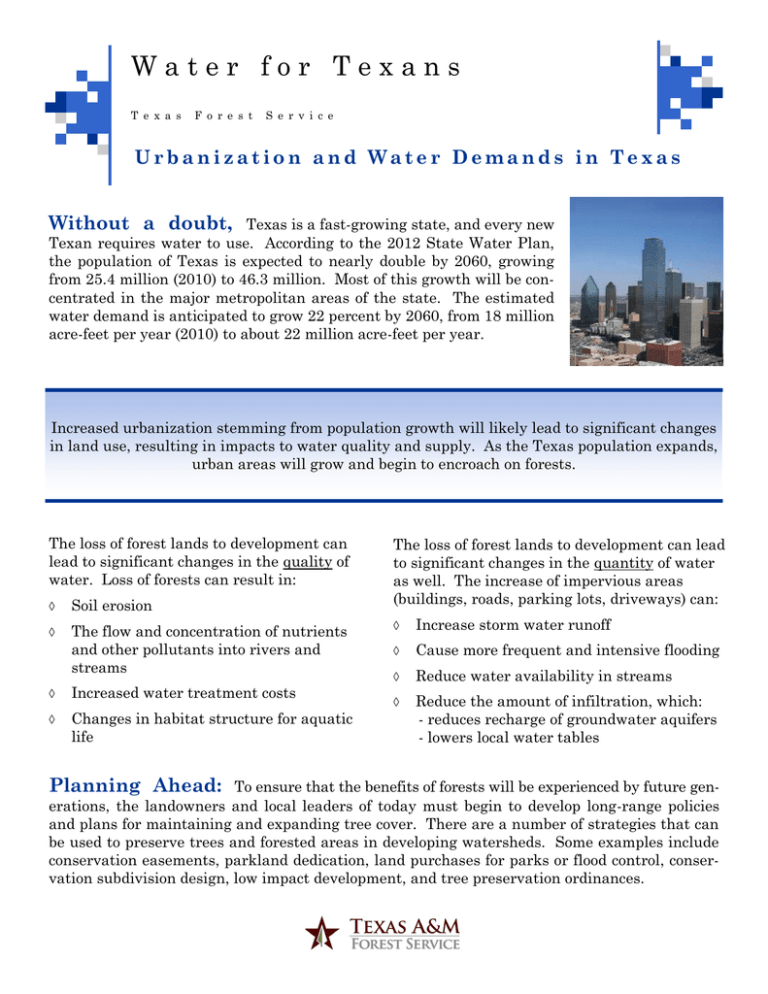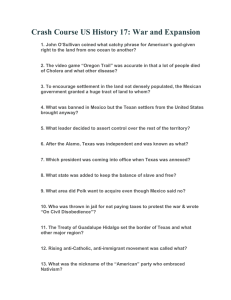W a t e r f o r ... U r b a n i z a t i... Without a doubt,
advertisement

Water for Texans T e x a s F o r e s t S e r v i c e Urbanization and Water Demands in Texas Without a doubt, Texas is a fast-growing state, and every new Texan requires water to use. According to the 2012 State Water Plan, the population of Texas is expected to nearly double by 2060, growing from 25.4 million (2010) to 46.3 million. Most of this growth will be concentrated in the major metropolitan areas of the state. The estimated water demand is anticipated to grow 22 percent by 2060, from 18 million acre-feet per year (2010) to about 22 million acre-feet per year. Increased urbanization stemming from population growth will likely lead to significant changes in land use, resulting in impacts to water quality and supply. As the Texas population expands, urban areas will grow and begin to encroach on forests. The loss of forest lands to development can lead to significant changes in the quality of water. Loss of forests can result in: Soil erosion The flow and concentration of nutrients and other pollutants into rivers and streams Increased water treatment costs Changes in habitat structure for aquatic life Planning Ahead: The loss of forest lands to development can lead to significant changes in the quantity of water as well. The increase of impervious areas (buildings, roads, parking lots, driveways) can: Increase storm water runoff Cause more frequent and intensive flooding Reduce water availability in streams Reduce the amount of infiltration, which: - reduces recharge of groundwater aquifers - lowers local water tables To ensure that the benefits of forests will be experienced by future generations, the landowners and local leaders of today must begin to develop long-range policies and plans for maintaining and expanding tree cover. There are a number of strategies that can be used to preserve trees and forested areas in developing watersheds. Some examples include conservation easements, parkland dedication, land purchases for parks or flood control, conservation subdivision design, low impact development, and tree preservation ordinances.


